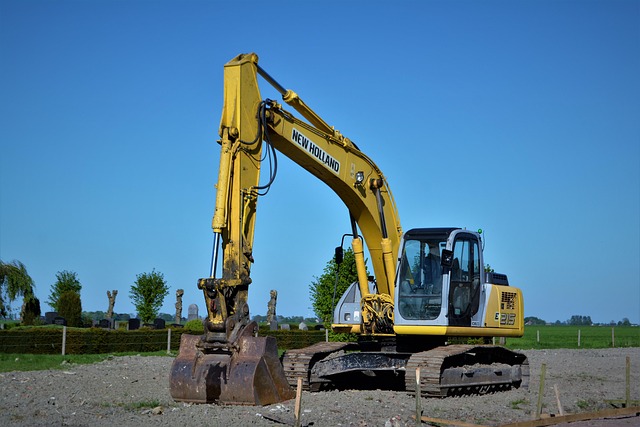Vehicle-to-Vehicle (V2V) communication revolutionizes travel by enabling cars to share real-time data on location, speed, and brakes, enhancing safety and efficiency. Global standards and regulatory frameworks prioritize consumer safety and trust. V2V warns about hazards, optimizes traffic flow, reduces congestion, and lowers carbon emissions. Integrate V2V technology by checking vehicle compatibility, selecting a service provider, installing hardware, customizing settings, and testing functionality.
Modernize your commute with Vehicle-to-Vehicle (V2V) integration—the future of safe and efficient travel. This article explores how V2V communication enhances daily travel, offering benefits like improved safety, optimized routes, and reduced congestion. Learn about the step-by-step guide to integrating this cutting-edge technology, ensuring a smoother and smarter journey for every driver. Discover the transformative power of select Vehicle-to-Vehicle communication today.
- Understanding V2V Integration: The Future of Safe Commutes
- How Vehicle-to-Vehicle Communication Enhances Daily Travel
- Benefits: Improved Safety, Efficient Routes, and Reduced Congestion
- Integrating V2V Technology: A Step-by-Step Guide for Drivers
Understanding V2V Integration: The Future of Safe Commutes

Vehicle-to-Vehicle (V2V) communication is a game-changer in the automotive industry, offering a promising path toward safer and more efficient commutes. By enabling direct vehicle-to-vehicle messaging, this technology allows cars to exchange data, including their location, speed, and other crucial information. This real-time communication can significantly enhance road safety by providing drivers with instant warnings about potential hazards like collisions or icy roads.
The future of connected cars lies in global V2V standards that facilitate seamless communication across different vehicle models and manufacturers. As the adoption of V2V technology gains momentum, the environmental impact of V2V becomes an increasingly important consideration. Efficient data exchange can lead to reduced travel times and lower carbon emissions, contributing to a more sustainable transportation system. Moreover, regulatory frameworks for V2V integration are being developed worldwide, ensuring consumer safety and fostering public trust in this innovative technology.
How Vehicle-to-Vehicle Communication Enhances Daily Travel

Vehicle-to-Vehicle (V2V) Communication is transforming daily travel by enabling cars to ‘talk’ to each other, enhancing safety and efficiency on the road. This technology allows vehicles to share real-time data, such as position, speed, and brake status, creating a network of intelligent transportation. By utilizing car-to-car communication protocols, nearby vehicles can instantly receive alerts about potential hazards like sudden stops or obstacles, giving drivers precious time to react.
This interconnectedness is particularly beneficial in urban areas and busy highways where traffic congestion and fast-paced movements are common. Smart cities applications can leverage V2V data to optimize traffic flow, reduce accidents, and even enable more efficient routing. However, as the range of long-range vehicle communication expands, it’s crucial to address data privacy concerns to ensure that sensitive information remains secure and trusted within this connected ecosystem.
Benefits: Improved Safety, Efficient Routes, and Reduced Congestion

The integration of Vehicle-to-Vehicle (V2V) communication technology offers a multitude of advantages for modern commuters, significantly enhancing their daily travel experiences. One of the most compelling benefits is improved safety. By enabling vehicles to exchange data in real time, V2V systems can warn drivers about potential hazards ahead, such as sudden stops or obstacles on the road, giving them vital seconds to react and avoid accidents. This advanced warning system not only protects drivers but also enhances pedestrian safety measures by ensuring that everyone on the road is aware of each other’s presence.
Moreover, V2V technology optimizes route efficiency and reduces congestion. Vehicles can communicate their positions, speeds, and intended destinations, allowing for better traffic flow management. This leads to more direct and efficient routes, minimizing unnecessary detours and reducing travel times. With networked vehicles sharing information about road conditions and potential delays, commuters can make informed choices, avoiding heavily congested areas and saving precious time. These transportation infrastructure upgrades rely on automotive wireless standards to facilitate seamless communication between vehicles, contributing to a smoother and safer journey for all.
Integrating V2V Technology: A Step-by-Step Guide for Drivers

Integrating Vehicle-to-Vehicle (V2V) communication technology is a straightforward process that can significantly enhance your daily commute. Here’s a step-by-step guide to help drivers get started:
1. Research Compatibility: Begin by checking if your vehicle is equipped with V2V capabilities. Many modern cars come with this feature, but older models may require retrofitting. Verify compatibility with the available V2V communication protocols, such as car-to-car communication standards, ensuring they align with market trends in automotive networking.
2. Select a Service Provider: Choose a reliable service provider that offers V2V integration services. Some providers offer subscription-based models or one-time purchases for installation kits. Compare their offerings based on features, coverage areas, and user reviews to ensure you select the best option for your needs.
3. Install the Equipment: Once chosen, install the necessary hardware following the provider’s instructions. This typically involves connecting a device to your vehicle’s diagnostics system. Ensure proper setup for seamless communication with other networked vehicles, highlighting the benefits like improved road safety and efficient traffic flow.
4. Configure Settings: Customize your V2V settings according to personal preferences. Adjust privacy options, select desired alert types, and set distance ranges for vehicle detection. Regular updates and calibrations ensure optimal performance.
5. Test and Enjoy: After installation, conduct test drives to familiarize yourself with the system’s functionality. Ensure alerts are received accurately and act as a responsible driver by following recommended safety guidelines when using V2V technology.
Modernizing your commute with Vehicle-to-Vehicle (V2V) communication is no longer a futuristic concept but an achievable reality. By selecting and integrating V2V technology, drivers can enhance daily travel experiences significantly. From improved safety features to more efficient routing and reduced congestion, the benefits are clear. Following our step-by-step guide, you’re now equipped with the knowledge to navigate this exciting advancement in transportation technology. Embrace the future of safe commutes today!
